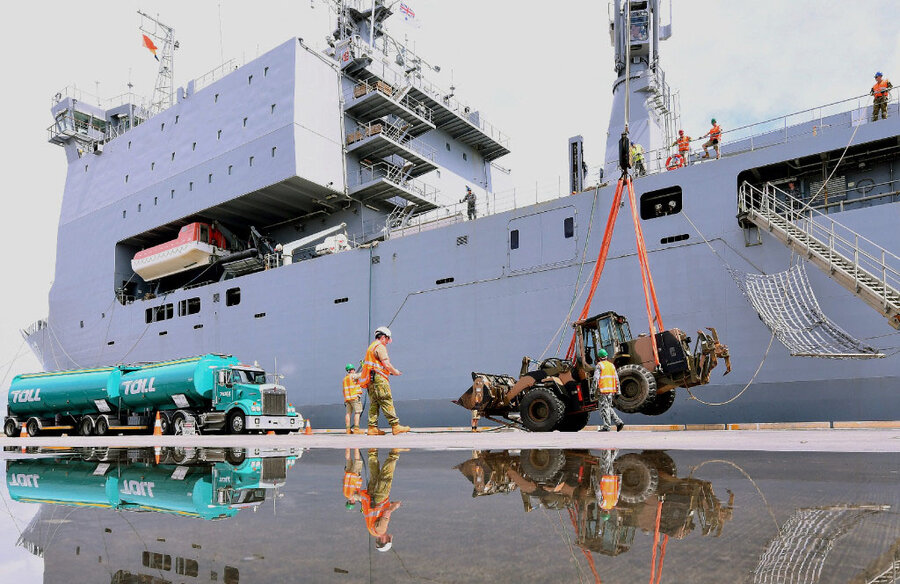In Debbie's wake, Australia begins to pick up the pieces
Loading...
Cyclone Debbie made landfall on Australia’s northeast coast Tuesday, with rains, storm surges, and winds as fast as 160 miles per hour scouring the state of Queensland.
As the country’s Prime Minister Malcolm Turnbull put it to reporters, "Nature has flung her worst at the people of Queensland."
Local residents – especially those in Bowen, Proserpine, and Mackay – had been warned to brace for this scenario, The Christian Science Monitor reported on Monday, with authorities urging 30,000 locals to evacuate. But there were no reports of death and only two reports of injuries a day after the storm.
About 60,000 Australians now lack electricity, and many are assessing damages to their homes and businesses. But their neighbors and authorities are racing to help.
"It's looking promising in terms of being able to rebuild promptly with most of the major infrastructure intact," Queensland Police Deputy Commissioner Steve Gollschewski told the Australian Broadcasting Corporation. But he acknowledged that flooding and other damage to roads has made it difficult to reach many storm-hit communities. "We're still struggling to get in there," he said.
Australian Defence Force Major General Stuart Smith told reporters that 1,200 military personnel had been mobilized for search and rescue missions and clean up. They and other first responders are relying on boats and helicopters to reach the worst-hit areas.
At a fire station in the town of Ayr, on the edge of the storm’s track, BBC’s Hywel Griffith spoke with two emergency workers waiting to be airlifted into the damage zone.
“When they get there, they'll knock on doors and check on people – provided of course that the doors have not blown away," wrote Mr. Griffith. "Another fireman explained how he was itching to get out and help, even if just to give a comforting hug to someone who might be shell-shocked by the cyclone.”
In addition to these recovery efforts, the area’s multimillion-dollar farming and tourism industries will need to assess the damage. Bowen alone has an agricultural industry worth AUS$450 million (about US$112 million), reported The Christian Science Monitor, and travel to nearby Whitsunday Islands helps bring in another $700 million in tourist spending to the region, according to The Guardian.
Both farmers and resort operators have reported major damage, and harrowing accounts from trapped tourists and damage to the nearby Great Barrier Reef could hurt the industry in the near future. That’s what happened after Cyclone Yasi hit the region in 2011, News.com.au reports.
That storm also brought insured losses of $1.2 billion, The Guardian reports. This time around, insurance firms say that they’ve received 2,000 claims so far, and Queensland Premier Annastacia Palaszczuk is urging the companies to “treat people with respect.”
Meanwhile, local leaders are urging their neighbors to take these challenges in stride. "We've had torrential rain,” Mackay Mayor Greg Williamson told BBC, “but that's what you get for living in a tropical paradise."
This report contains material from the Associated Press and Reuters.








